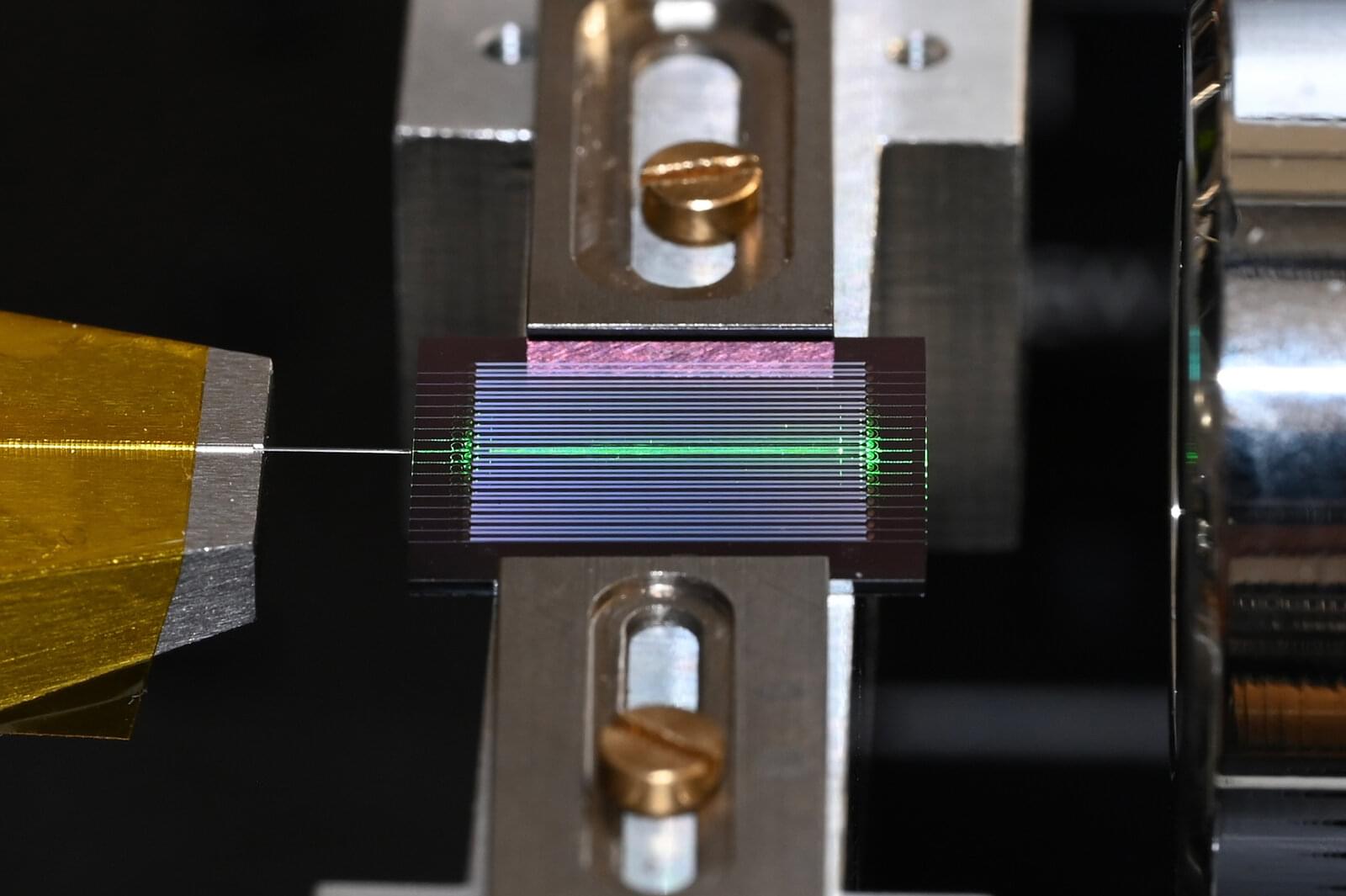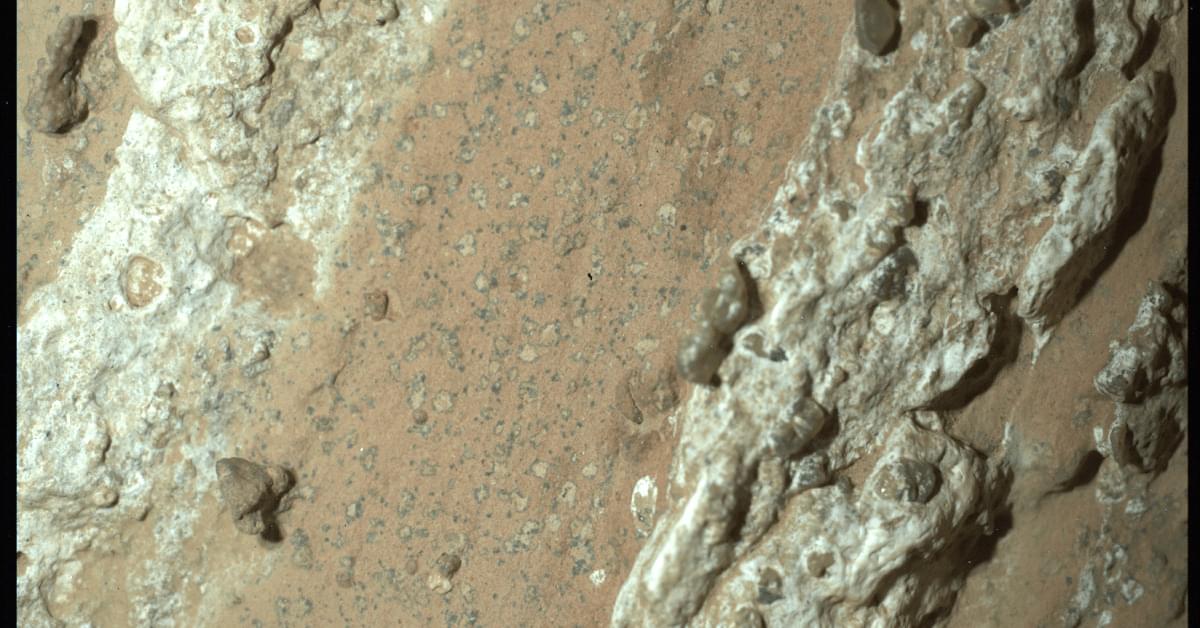One of this year’s coveted Lasker Awards went to three scientists who helped invent a life-saving treatment for cystic fibrosis, a genetic disease.



Focused laser-like light that covers a wide range of frequencies is highly desirable for many scientific studies and for many applications, for instance, quality control of manufacturing semiconductor electronic chips. But creating such broadband and coherent light has been difficult to achieve with anything but bulky, energy-hungry tabletop devices.
Now, a Caltech team led by Alireza Marandi, a professor of electrical engineering and applied physics at Caltech, has created a tiny device capable of producing an unusually wide range of laser-light frequencies with ultra-high efficiency—all on a microchip. The work has potential in areas ranging from communications and imaging to spectroscopy, where the light would aid the detection of atoms and molecules in various settings.
The researchers describe the new nanophotonic device and approach in a paper that appears in the journal Nature Photonics. The lead author of the paper, “Multi-Octave Frequency Comb from an Ultra-Low-Threshold Nanophotonic Parametric Oscillator,” is Ryoto Sekine (Ph. D.), who completed the work while a graduate student in Marandi’s lab.


NewsPicks crew flew to Canada in search of AI revolution but unexpectedly came across the true story behind the birth of AI.

Describing and understanding personality structure is fundamental to predict and explain human behavior. Recent research calls for large personality item pools to be analyzed from the bottom-up, as item-level analysis may reveal meaningful differences often obscured by aggregation. This study introduces and applies Taxonomic Graph Analysis (TGA), a comprehensive network psychometrics framework aimed at identifying hierarchical structures in personality from the bottom-up, to an open-source 300-item IPIP-NEO dataset (N = 149,337). This framework addresses key methodological challenges that have hindered accurate recovery of hierarchical structures, including local independence violations, wording effects, dimensionality assessment, and structural robustness.

“This finding by Perseverance …is the closest we have ever come to discovering life on Mars,” said acting NASA administrator Sean Duffy in a statement. “The identification of a potential biosignature on the Red Planet is a groundbreaking discovery, and one that will advance our understanding of Mars.”
Perseverance did not discover fossilized microbes and it surely didn’t discover living ones. What it found was a rock streaked in a range of colors—red, green, purple, and blue—flecked with poppy-seed-like dots and decorated with what the Perseverance scientists compared to dull yellow leopard spots. That said a lot. As the rover’s instruments confirmed, the red is iron-rich mud, the purple is iron and phosphorous, the yellow and green are iron and sulfur. All of those elements serve as something of a chow line for hungry microbes.
The poppy seeds and leopard spots, meantime, resemble markings left behind by metabolizing microbes on Earth. When the rover trained its instruments on those features they detected two iron-rich minerals—vivianite and greigite. On Earth, vivianite is frequently found in peat bogs and around decaying organic matter—another item on the microbes’ menu. And both minerals can be produced by microbial life. Images of the rock with its distinctive features were beamed back to Earth by Perseverance, while X-ray and laser sensors analyzed the chemistry of the markings.
To try Brilliant for free, visit https://brilliant.org/APERTURE/ or scan the QR code onscreen. You’ll also get 20% off an annual premium subscription.
AI experts from all around the world believe that given its current rate of progress, by 2027, we may hit the most dangerous milestone in human history. The point of no return, when AI could stop being a tool and start improving itself beyond our control. A moment when humanity may never catch up.
00:00 The AI Takeover Is Closer Than You Think.
01:05 The rise of AI in text, art & video.
02:00 What is the Technological Singularity?
04:06 AI’s impact on jobs & economy.
05:31 What happens when AI surpasses human intellect.
08:36 AlphaGo vs world champion Lee Sedol.
11:10 Can we really “turn off” AI?
12:12 Narrow AI vs Artificial General Intelligence (AGI)
16:39 AGI (Artificial General Intelligence)
18:01 From AGI to Superintelligence.
20:18 Ethical concerns & defining intelligence.
22:36 Neuralink and human-AI integration.
25:54 Experts warning of 2027 AGI
Support: / apertureyt.
Shop: https://bit.ly/ApertureMerch.
Subscribe: https://bit.ly/SubscribeToAperture.
Discord: / discord.
Questions or concerns? https://underknown.com/contact/
Interested in sponsoring Aperture? [email protected].
#aperture #ai #artificialintelligence #pointofnoreturn #technology #tech #future

Whether or not you think humans *should* be announcing our presence to the cosmos, we’re doing it, anyway. Both intentionally, and not. And if aliens really…